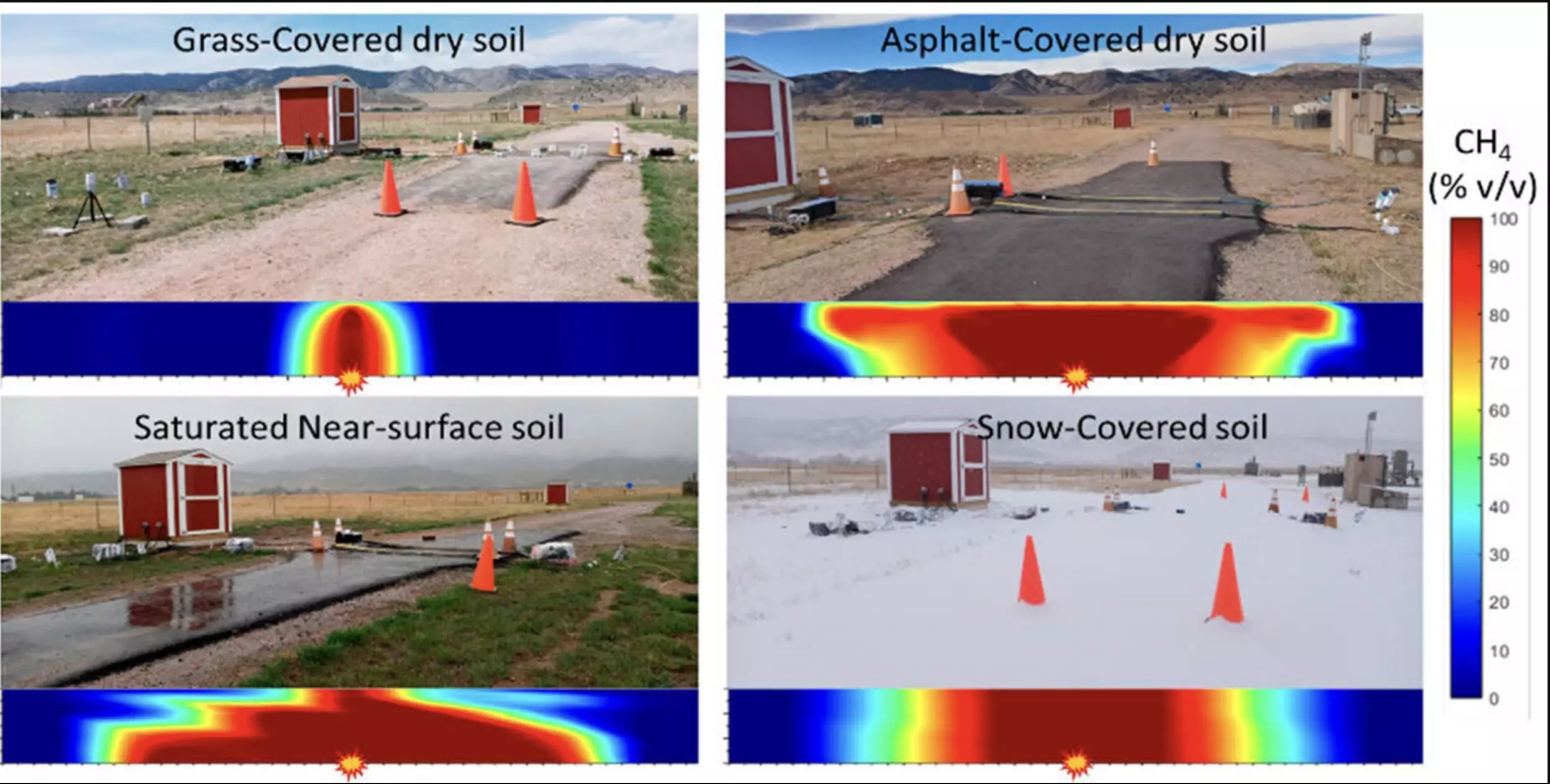A groundbreaking study led by a team from Southern Methodist University (SMU) reveals shocking insights into how natural gas behaves when it escapes from subsurface pipelines. Traditionally, it was assumed that the surrounding soil’s dryness was the primary factor influencing how far and how quickly hazardous gas could spread. This new research, however, unveils that factors such as water-saturated ground cover and asphalt paving significantly exacerbate the risk posed by these leaks.
When examining the consequences of natural gas leaks, it’s crucial to consider that methane, the primary component of natural gas, not only poses an immediate explosion hazard but also stands as a major contributor to climate change. In a world grappling with environmental crises, these findings are especially critical, as they highlight a dual-threat scenario – the safety of nearby communities and the broader implications for global warming.
The Experiment: Innovative Leak Simulations
The research utilized controlled experimental leak tests at Colorado State University’s Methane Emissions Technology Evaluation Center (METEC). The team assessed various surface structures, including wet asphalt, snow-covered ground, and dry soil, to understand their effects on gas migration. The leaks were meticulously monitored as gas escaped from a deliberately cracked pipeline, allowing researchers to measure its spread over time. Each testing condition provided a unique insight, showing how wet or snow-laden surfaces could redirect gas both vertically and horizontally far from the leak site.
Understanding gas migration dynamics is akin to analyzing a complex puzzle. The researchers likened the journey of escaping gas to navigating through a slab of Swiss cheese, filled with gaps that allow for additional travel. This analogy underscores the reality that methane can travel unpredictably, extending the hazard zone well beyond the immediate area of a leak.
Implications for First Responders
The findings from this study carry profound implications for the safety protocols employed by first responders and gas companies. Historically, response strategies to gas leaks have largely revolved around assumptions based on dry soil conditions, potentially minimizing safety considerations when surface conditions are compromised. The research draws attention to the importance of incorporating surface state into emergency response training and risk assessments.
Kathleen M. Smits, co-author and Chair of Civil and Environmental Engineering at SMU, indicates the pressing need for responders to recognize that the state of the ground can significantly alter gas behavior post-leak. The study paints a stark picture of the risks involved; not only can the potential danger extend far beyond the initial leak point, but gas can remain trapped under snow or moist surfaces and erupt violently when it finally escapes.
Lingering Threats: Post-Leak Outcomes
Perhaps one of the most alarming discoveries was that methane could be detected at high concentrations even days after a gas leak was supposedly contained. The researchers observed that gas, once released, did not simply vanish. Instead, it lingered beneath the ground’s surface, trapped there by ice, moisture, or other materials, presenting a continuous hazard to both environmental integrity and public safety for up to 12 days.
The revelation challenges the conventional understanding of gas leak management. This delay in dispersal means ongoing monitoring is essential even after immediate efforts have been undertaken to mitigate the leak. It is no longer sufficient to patch a line and assume the danger has passed. The environment’s involvement must be considered in all subsequent safety protocols.
From Research to Action: Redefining Gas Safety Standards
Ultimately, this research has significant implications for pipeline safety regulations and environmental policies. Recognizing the importance of soil conditions can aid in developing more sophisticated models for predicting leak behavior and their subsequent impact on both the environment and public safety.
As industries move toward adopting advanced technologies and standards, this study’s findings could encourage policymakers to implement stringent monitoring protocols and enhance community awareness regarding potential gas leak risks. By prioritizing both safety and environmental preservation, the pipeline industry can take greater responsibility in the fight against climate change.
With the insights from SMU and METEC now in the public domain, it is incumbent upon both the industry and regulatory bodies to adopt a proactive stance toward natural gas extraction and transportation, integrating these findings into their safety strategies and ecological considerations. The time for complacency has passed—future steps must harness this research to pursue a more secure and environmentally-conscious approach to natural gas management.


Leave a Reply